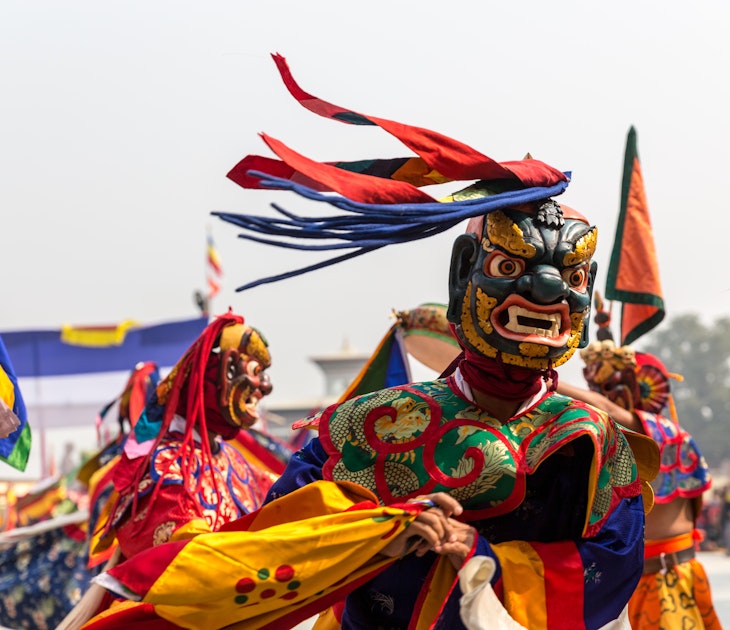
6 common photography mistakes (and how to avoid them)
Oct 1, 2010 • 4 min read

Whether you're on the other side of the world or wandering your own neighbourhood, you'll soon realise that the sights that have you reaching for your camera are fleeting photo opportunities.
With this in mind, you really need to be prepared to capture such moments. Here are the six most common mistakes that can leave you with an ordinary image - instead of the masterpiece it should have been.
1. Not having a strong point of interest
The very first thing to consider is the subject - what is it and why are you taking a photo of it? Successful images have a point of interest: the key element around which the composition is based. It’s probably the thing that caught your eye in the first place and should be able to draw and holds the viewer’s attention.

2. Not getting close enough to the subject
Good compositions leave no doubt as to the subject of the photograph. How do you make sure this is clear? A good way to start is to fill the frame with your subject. This helps to eliminate unnecessary or unwanted elements and overcomes the common mistake of making the subject too small and insignificant, which leaves the viewer wondering what the photo is supposed to be of. Often just taking a few steps towards your subject or zooming in slightly will make an enormous difference.

3. Focusing on the wrong part of the composition
The sharpest part of the image should be the point of interest, so take care when focusing. If something other than the main subject is the sharpest part of the composition the viewer’s eye will rest in the wrong place.
Most compact cameras and all SLRs have a focus-lock facility, activated by depressing the shutter release button halfway, which you should be confident using. It allows you to produce more creative and technically better pictures by locking the focus on the main subject then recomposing without the camera automatically refocusing.

4. Placing the subject in the middle of the frame
Centering the subject often contributes to a static composition so you should aim to place the point of interest away from the centre of the frame. As you’re thinking about where to place the point of interest, keep in mind the 'rule of thirds' that has traditionally been the starting point for successful composition. As you look through your viewfinder or study the LCD screen, imagine two vertical and two horizontal lines spaced evenly, creating a grid of nine rectangular boxes.
Try placing the point of interest, or other important elements, on or near the points where the lines intersect. For example, if you’re taking a portrait, the subject is the person’s face and the point of interest would be their eyes. In a landscape the point of interest may be a boat floating on a lake; place the boat on one of the intersections and also position the horizon near one of the horizontal lines.

5. Including elements that conflict with the subject
Avoid including other elements that conflict with the main subject. Look at the space around and behind your subject and make sure nothing overpowers it in colour, shape or size. What you leave out of the frame is just as important as what you leave in.
Do you really want power lines running across the facade of the most beautiful building in the city? It’s fine if you do, but not if you didn’t notice them in the first place! Scan the frame before pressing the shutter release, looking for distractions and unnecessary elements.

6. Not thinking about the direction of the light
The direction of the light and how it is illuminating your subject, whether it’s the natural light of the sun, incandescent lighting indoors or at night or flashlight, can make or break a photograph. That's why it's vital to observe the light. If you are aware that it's striking your subject in the wrong place - for example, if the facade of a beautiful monument is in shade, or if someone’s hat is casting a shadow over half their face - then you can take action.
Either move the subject, move yourself or, if the subject isn’t going to disappear, wait a while or return at the appropriate time of day. Once you’re in the habit of considering how the light is falling on your subject you can select a viewpoint and time of day so that the light enhances your subject, rather than detracts from it.

Happy photographing!
Award-winning travel photographer Richard I'Anson helped establish Lonely Planet Images and wrote the Lonely Planet Guide to Travel Photography.
Explore related stories

Architecture
The ultimate guide to Tibetan Buddhist monasteries: exploring gompas in the HimalayasNov 22, 2024 • 7 min read

 Festivals & EventsChristmas dinners around the world: choose your favorite festive dishes
Festivals & EventsChristmas dinners around the world: choose your favorite festive dishesNov 22, 2024 • 5 min read

 BeachesThese 5 day trips from Sydney will show you the splendors of New South Wales
BeachesThese 5 day trips from Sydney will show you the splendors of New South WalesNov 22, 2024 • 7 min read
 Destination PracticalitiesDo you need a visa to visit Thailand? Here’s everything to know
Destination PracticalitiesDo you need a visa to visit Thailand? Here’s everything to knowNov 22, 2024 • 8 min read



 Wildlife & NatureDay trips from New Orleans: 9 can't-miss jaunts from The Big Easy
Wildlife & NatureDay trips from New Orleans: 9 can't-miss jaunts from The Big EasyNov 21, 2024 • 6 min read
